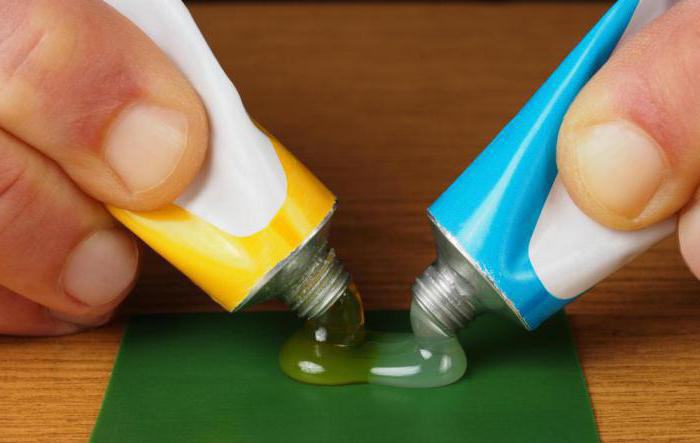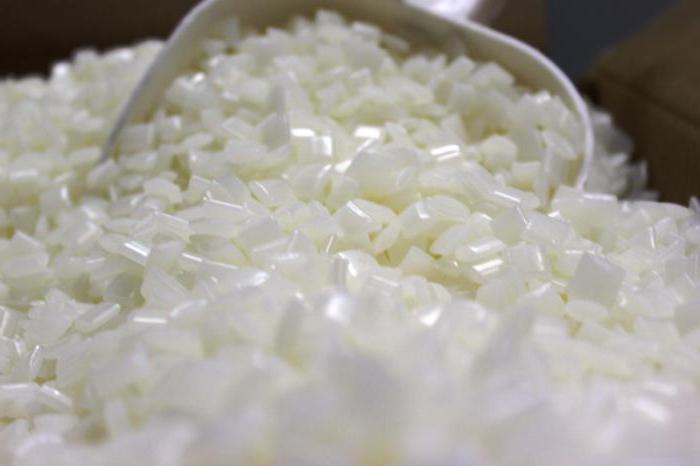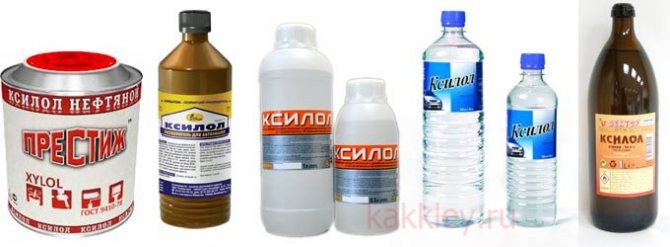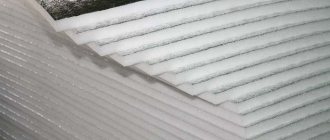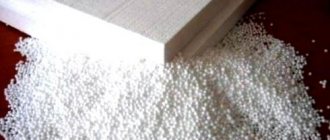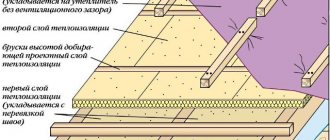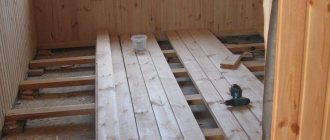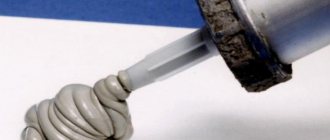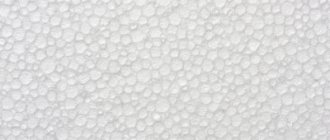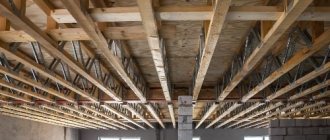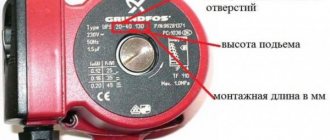Why walls are insulated with penofol
Due to the vital activity of people in the house and the operation of devices, water vapor is released into the air. If the walls are poorly insulated, moisture settles on the cold surface in the form of condensation. At a sufficiently thick wall, the "dew point" moves inward, which leads to wetting of the walls.
To prevent this from happening, the walls should be insulated up to the standard coefficient of thermal conductivity, which in penofol with a layer of 4 mm foiled on both sides is the same as in mineral wool with a thickness of 70-80 cm.This example shows that by insulating a room with penofol we save the volume of our home.
It should be noted that it is really quite simple to insulate anything with penofol (wall, ceiling or roof). If you follow the manufacturer's instructions, then to achieve maximum efficiency, an air gap of 1.5 to 2 cm wide must be provided on both sides. To create such a gap, roll foam foam will have to be fixed to the slats of a wooden crate attached to the base.
That is, first you need to take strips with a thickness of 20 mm and attach them to the wall vertically or horizontally with an interval equal to the width of the foam foam roll. If the house is wooden, then the planks are attached with self-tapping screws; for brick or concrete bases, dowels will be required. Then strips of the required length are cut from the roll and are aimed at the slats with staples from a construction stapler.
When a layer of foam foam insulation is fixed and glued with tape, the same strips are installed on top of it with their own hands to ensure the outer air gap. They are fastened with self-tapping screws to the previous crate, and outside they are revetted with plasterboard sheets or other finishing methods are used. Note that the vapor barrier film is not laid, since there is no need for it, penofol itself is a vapor barrier.
It cannot be said that in practice, few people follow the instructions, usually penofol is attached directly to the wall or ceiling, and the air gap is made only on one side. This reduces the thermal insulation properties of the material, and we will explain why below. With thermal insulation of the roof or inclined walls of the attic, the installation of foam foam is carried out by attaching it to the lower planes of the rafter boards. This means that the space between the rafters is filled with another insulation, since one thin polyethylene will not be enough.
Also, the floors in wooden houses are insulated with foamed polyethylene, laying it between the logs. Again, first, waterproofing is laid, then a slab insulation, and on top - penofol. Putting it under the very bottom or in the screed is pointless, from compression the material ceases to be heat-insulating. Although in practice, such errors can often be found.
Another area of application of penofol is insulation of balconies and loggias, where the material is laid in a second layer after more serious insulation - extruded polystyrene foam or polystyrene foam. The installation method is still the same: first, lathing bars are placed, polystyrene plates are laid between them, and polyethylene foam is attached on top. After that, interior decoration is carried out.
The procedure for gluing elements
Working with glue is very simple, it does not require deep knowledge in the construction industry and many years of experience. All technological procedures are quite capable of being handled by beginners.To connect polymers or glue them to another surface, you need to carry out the following sequence of operations:
- Clean and degrease surfaces. Many manufacturers claim that their products can be used on untreated surfaces, but should not be trusted. In any case, preparation will take only a few minutes, but a positive result of the operation after that will be guaranteed.
- Further on the processed materials can be applied glue for gluing polyethylene. It will harden in only 2-3 minutes, so immediately after application, you need to fix the elements to be connected in the desired position.
- After completing the previous operation, you need to leave the processed products at rest for at least a few hours. This time is enough for the glue to finally solidify and adhere to the details.
As you can see, the procedure is not much different from working with standard office glue. The only thing to note is that all work must be carried out with protective gloves. Some of the elements that make up the glue can cause irritation and allergic reactions on exposed skin. In case of contact with eyes, rinse immediately with plenty of running water and consult a doctor.
Also, do not allow the substance to enter food. It must be stored at room temperature out of the reach of children and pets. It will be much more convenient to work with glue if you purchase a special gun for this. It is charged with ready-made cartridges and allows you to evenly distribute the substance over the surface and strictly observe the required dosage. But it is worth buying such a unit only if a large amount of work is planned. For local repairs, its acquisition will be absolutely inexpedient from an economic point of view.
Varieties
Penofol is the second layer of insulation and, in addition, acts as a vapor barrier.
- Type A - one-sided foiling. It is used in combination with other insulation materials (polystyrene, styrodur).
- Type B - double-sided foil. It can be used autonomously.
- Type C - one-sided foil, the second surface is covered with an adhesive with a protective film. It is glued to the main insulation or to the base.
- Type ALP - one of the surfaces is covered with foil (14 microns), laminated on top with a polyethylene film.
- Types M and R - embossed with one-sided foil.
- Perforated. It has the property of allowing air to pass through due to the peculiarities of the structure.
HDPE welding technology
The thermoplastic welding process consists of several stages. First, the surfaces of the parts to be welded are prepared, and then the welding zone is heated. Further, the polypropylene parts are welded with a welding machine and the subsequent cooling of the weld (the welded seams are under pressure). Then the welded parts are released from pressure and the seam is processed - the result of welding.
The quality of the weld is indicated by the valence ratio. The valence ratio denotes the ratio of the strength of the seam and the strength of the material to be welded. Often a satisfactory valence ratio is 0.6-0.8. It follows from this that the strength of the seam after welding of polymers is 60-80% of the strength of the base material. But it is worth remembering that a good welder can create a seam with a higher valence ratio, up to 100%, depending on the material.
Use for thermal insulation of balconies
Manufacturers and sellers of penofol attribute wonderful thermal insulation characteristics to this insulation, which is actually a myth.
In fact, the presented schemes are nothing more than another way to improve the thermal insulation of external fences with the help of air gaps, since the intrinsic resistance to heat transfer to penofol is categorically not enough.
R = δ / λ, where:
- δ - thickness of penofol in meters, taken 0.004 m;
- λ is the coefficient of its thermal conductivity, equal to 0.037 W / m2 ° C.
We get R = 0.004 / 0.037 = 0.11 m2 ° C / W. Now we look at the comparison table, which is presented on the same resource as the technical data. It says that 4 mm of foam foam can easily replace 77 mm mineral wool or 46 mm expanded polystyrene.
Rminvats = 0.077 / 0.05 = 1.54 m2 ° C / W, which is 10 times more than foamed polyethylene.
Hence the conclusion: the presented comparative table is a pure fake. The data given in it are unreliable, and although the material is a good insulation, it is no better than others. The reason is that it is too thin, although in terms of thermal conductivity it is equal to extruded polystyrene foam.
Against this background, all other benefits of penofol pale. True, there is another myth - about the reflection of infrared heat back inside the room thanks to the foil surface. But none of the manufacturers explain what the foil will reflect behind the interior trim. After all, infrared radiation spreads through an open space, it will not pass through drywall or other obstacle.
What is really good about penofol is its low cost and ability to act as a vapor barrier along with other insulation, as evidenced by reviews on the forums. In addition, it is easy to install, and the process is not time-consuming. You can also note the durability of the insulation, reaching 50 years, provided that it is located inside the building, and not outside.
To insulate the inner surface of the walls, foam foam types "A", "B", "C" are used - each in each case, since the material can be glued directly to the base of the wall (type "C"), attached to a massive insulation, waterproofing it ( type "A") and used autonomously, attached to the wall frame structure (type "B").
We suggest that you familiarize yourself with Products causing constipation in children with breastfeeding
Hello. We will try to answer your question.
Penofol is an energy-saving material with a laminated structure. It combines the properties of foamed polyethylene and thin aluminum foil. The material is characterized by lightness and low thickness, and therefore is often used on various objects (including on the balcony) for insulation, ensuring tightness, thermal, noise, steam and waterproofing. However, to ensure high-quality protection, penofol is not enough to lean against the insulated surface - you need a special glue for penofol.
For every owner of a house or apartment there comes a time when it is necessary to do the insulation of walls or a balcony.
There are a large number of heaters on the market that have their own characteristics. How to choose the most suitable one for the task at hand is described in the article below.
Foil insulation for walls has a number of advantages, including easy installation and relatively low cost.

Insulation with foil has a number of features and a minimum of negative sides. Benefits:
- Foil reflects heat. Thus, the heat stays in the house, from the back side, does not let the heat into the house in the summer.
- Increased durability.
- Partially applicable as a waterproofing material.
- Easy assembly, light weight, easy disassembly.
- Insulation keeps cold wind out. Isolates as much as possible from external influences. Does not lend itself to deformation with sudden changes in temperature.
- Blocks out noise from the street.
- Does not rot or mold.
- This material is thinner than others, but 20-30% more efficient.
- The insulation does not emit substances harmful to health and prevents the smallest irritants and allergens from getting inside.
Minuses:
- There is no rigidity, therefore, it cannot be covered with plaster or wallpaper on top.
- For fixing, special adhesives are required.
- Sometimes insulation with foil is not enough to insulate a room.
Despite the disadvantages, foil-clad material is widely used for various purposes.
Foil insulation reflects infrared rays, which are, in fact, thermal. But, you do not need to apply the material everywhere. In some places, it will not work as expected.
Basically, it is mounted at sources of thermal energy:
- heating devices - batteries, air heaters. The insulation is mounted on the wall with foil into the room;
- boiler, fireplace stove.
And also it is used when installing a "warm floor". The reflective layer will direct the heat in the desired direction.
Small rooms, where every centimeter plays a role. Here, thin insulation will be appropriate on the walls and ceiling.
In the attic. Here the insulation is mounted on the roof. Apply 2 coats to combat heat and cold.
In baths and saunas. Heating of the room is not constant, foil material is suitable for such purposes.


Garages, hangars, outbuildings - an installed radiator or potbelly stove.
They also insulate heating pipes, air ducts, wells and wells.
There are 3 types of foil foam on sale. Each is labeled with Latin letters, they indicate the packaging.
TYPE A - heat insulator with polymer, foil layer on one side. Produced in different thicknesses. Applicable for integrated insulation of buildings inside. Together with this insulation, glass wool is used. They also produce perforated foil insulation. It is mounted in log houses in order for the tree to "breathe".
TYPE B - the foil is located on both sides. This is the maximum protection against heat loss. Penofol type "B" is used for thermal insulation of the attic, supporting structure, basement, floor. As well as insulation of the pipeline, heating system.
TYPE C - on one side there is foil, on the other - a thin layer of glue, protected by a foil. Self-adhesive foam foam is easy to install without spending a lot of time. For installation, they are cut into pieces of the required length and glued to the prepared surface.
TYPE R - full match to type "A", but with a pattern on the foil. Used as a decor for walls in the room. And also with multilayer insulation, creating an air gap.
TYPE ALP - high reflectivity. This insulation is used in agriculture, for example, to insulate incubators or buildings for calves.
The NET type is analogous to the B type. Produced in a narrow roll or in reels. They are used for pipeline insulation.
2000 Type C - reduced performance. The adhesive layer is of poor quality and has poor adhesion.
The building materials market is full of types of insulation. They have their own characteristics, positive, negative sides.
General parameters of thermal insulation:
- The weight. The insulation should not weigh much, because, when mounting it on the structure, there should be no weighting.
- Thickness. The thinner the material, the more space is left in the room.
- Low thermal conductivity.
- Moisture permeability. The material should absorb moisture as little as possible.
- Noise isolation. Does not pass sounds from the street.
- Environmentally friendly material. Should not emit harmful substances.
- Easy to install.
Comparing basalt insulation and foil foam, you need to compare their characteristics.
Basalt wool
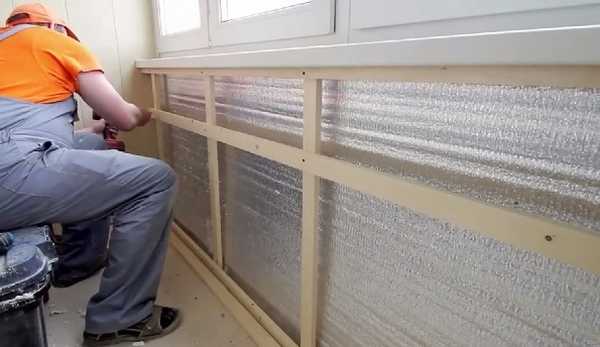

Produced from rocks of volcanic origin. It does not burn, has good sound insulation performance, and does not lose its qualities over time. It is completely safe for health.
Produced from polyethylene foam with a porous structure. A layer of foil is glued on top, as a heat reflector. This heat-insulating material is several times thinner than basalt wool. In addition, it reflects heat and practically does not absorb it.
Which insulation to choose depends on the budget for the insulation, as well as personal preferences.
The foil layer reflects up to 97% of the heat inside the room. This makes penofol an effective insulator for insulating balconies and loggias. Due to its small thickness, it does not "conceal" the useful volume of the room.
Before the insulation works, the old finish is dismantled. Corners and gaps are sealed with polyurethane foam. A heat insulator (penoplex, technoplex) is glued or attached to the walls. Vertical joists are attached through it with dowels to the wall with a step along the width of the foam foil roll. This sequence takes into account the high thermal conductivity of wood and reduces the risk of freezing. Penofol is attached to the logs with a foil layer towards the room.
Fastening penofol does not require special tools. It requires a knife (scissors), stapler (hammer) or glue brush.
https://youtu.be/4JT_Sud8sBE
We suggest that you familiarize yourself with the Determination of doses of fertilizers
The cost of the insulating material depends on its thickness and the number of foil claddings. One-sided penofol can be purchased at a price of 45-75 rubles / m2, double-sided - 70-110 rubles / m2. For laying penofol, contractors usually ask for a fee equal to the cost of the material itself.
How to choose glue
On sale there is a fairly wide range of various adhesives for working with foamed polyethylene. And it is advisable to make the choice using the following criteria.
- The temperature range must match this characteristic of the insulation.
- The adhesive properties must be extremely high.
- If the glue is to be used for interior decoration, then it must be certified and non-toxic.
- If the glue is chosen for exterior decoration, then it must be resistant to a variety of weather conditions and temperature extremes.
- If you intend to deal with the decoration of the sauna and bath, then the glue will need to be mixed with water-repellent agents.
Water-based glue is categorically not suitable for working with isolon, because it does not allow the adhesive to penetrate into all the pores of the insulation. Consequently, the level of adhesion will be insufficient.
Applications
Penofol is used as a middle layer of thermal insulation.
- walls of buildings (inside and outside), attics, attics, basements, non-capital buildings;
- production facilities and technological equipment;
- heat, steam and waterproofing of saunas, showers,
- insulation of warm floors and roofs;
- pipelines and expansion tanks;
- bodies of vehicles, trade and residential trailers, refrigerating chambers;
- insulation and sound insulation of air conditioning, ventilation and sewerage systems;
- as heat reflectors for home radiators.
Reliable manufacturers and brands
For the connection to be reliable and durable, you need to use a good adhesive. Firms that value their reputation do their best to make it convenient for the master to work with their products. If you do not know what to prefer, pay attention to the appearance of the product. A self-respecting manufacturer will never pack material in a box that tears at the first touch, does not stick a nondescript, quickly fading label with blurry text and an incomprehensible pattern on the container. Take a look at the instructions. It should be detailed and written in understandable language.
For gluing polyethylene, there is a special Weicon Easy-Mix PE-PP adhesive. It contains microscopic glass beads that add extra strength to the seam. The composition hardens very quickly, you should have time to do all the work in 3 minutes. If you don't find one, you can use standard plastic adhesive, but try it on a small area first. To make the surface firmly bond with the adhesive, treat it with chromic anhydride. It is recommended to work at room temperature, the seam will gain full strength in 6 hours.
If you haven't found anything suitable in the store, you can glue the polyethylene with epoxy resin. With this option, the surfaces need careful preparation. Rub the film with a fine sandpaper to loosen the surface smoothness. Degrease, cover with an oxidizing agent and dry the bonding area. Smear both surfaces, press them firmly together and leave to harden overnight.
Which is better - foil foam or basalt insulation?
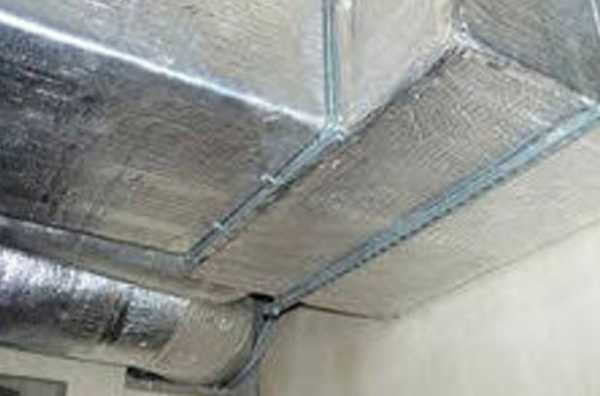

Wooden slats, 15-20 mm thick, are attached to the wall with dowels (with a step of 90-100 cm), giving an air gap between the wall surface and the foam foam. followed by a layer of penofol, with two layers of foil. Drywall is attached to the rail tightly with self-tapping screws with a pitch of 250 mm. If it is decided to arrange a gap for ventilation on both sides, then another rail is attached behind the foam foam, and sheets of drywall are already mounted to it.
Penofol itself can be attached to the slats or crate with a stapler or nails. Finishing takes place end-to-end, and the joints must be done with cutting so that the ends of the sheets fit snugly against each other. The joints are glued with a special aluminum tape to avoid drafts and cooling the structure through them.
In addition to the thermal insulation of the building with penofol from the inside of the walls, there are two more methods of insulation:
- laying of foam foam between the layers of the supporting structure of the walls - with the so-called "well" masonry or in three-layer reinforced concrete panels;
- external insulation (perforated penofol is used - it allows the steam to leave the wall structure) with subsequent external finishing - a plaster coating "wet" facade or a hinged ventilated coating.
Basalt wool
Basic installation rules:
- The material is mounted straightened, uncompressed, without folds. Fixed on a crate or directly on a clean surface.
- Penofol is fixed with foil in the direction of heat to reflect it. This is an obstacle to the release of heat energy to the street.
- The material is glued butt joint. The borders are glued with tape for sealing.
- For gluing the insulation, special types of glue or a self-adhesive type are used.
Installation is quick and easy both inside and outside. The work in sequence and principle is identical internally and externally. It is easy to cut, quickly assembled.
Before gluing penofol, you do not need to pay attention to its weight. The material is lightweight and will withstand universal glue. But, for strength, they acquire adhesives intended for this.
The glue must correspond to the indicators of the heat-insulating material:
- temperature range 100 / -600C;
- indoor use, not outside;
- non-toxic;
- good adhesion.
The adhesive composition should not emit harmful substances. Penofol is capable of absorbing 3% of heat, which means that the glue on the back side can also warm up.
For gluing the surface and penofol, masters recommend purchasing the following brands:
- Weicon Easy-Mix PE-PP 45. Two-component adhesive designed for gluing concrete (brick) surfaces with polyethylene, polypropylene.
- Moment - has many positive aspects, including good adhesion. The glue will quickly and permanently glue the insulation to the surface behind the radiator or near the door.
- Liquid nails - are able to fix the heat-insulating material for a long time.
Other brands: Titanium, Tilit, Atlas Stopter K-20 kley, Ceresit (CT83).
Type A. The material is fixed with a stapler to the inner surface of the wall or ceiling with foil inside the room. Laying is carried out "joint to joint". The joints are sealed with mounting tape ("LAMS"). On top of the layer, slats (1.5-2 cm thick) are attached, intended for fastening the facing material. The slats will provide an air gap between the foil layer and the cladding and, as a result, the reflective foil effect.
Type B.When using this type of material, the slats are pre-packed onto the structure. Sheets are cut to size, fastened with a stapler, the joints are glued with aluminum mounting tape. On top of the foam layer, slats are also attached as a basis for finishing. With this method, the properties of both foil surfaces are maximized.
If an external lining of thermal insulation is assumed, perforated foam foam is used. It is mounted with foil outward in front of the facing layer. At especially low outside temperatures, it is advisable to use the material in conjunction with foam or mineral wool.
The joints between the pieces of foam foam are glued with aluminum tape or foamed with polyurethane foam.
In multi-layer roofs, foam foil is mounted between battens made of slats. A prerequisite is ventilation of air gaps. The sheets are attached along the slabs using the same technology as on the walls. If it is envisaged to use polystyrene in the project of roofing equipment, then with the installation of penofol, the costs with the same quality will be reduced by 2-3 times.
When arranging an insulated attic, the material is laid parallel to the eaves overhang directly on the rafters. The overlap of the strips is left at least 10 cm. The penofol is fastened with brackets without tension, forming a sagging of about 2 cm. This will allow condensate to drain freely from the rafters of the counter-lattice. Since the flow of moisture is directed upward from the premises, water vapor, condensing, moisturizes the insulation. Therefore, a layer of penofol is attached under it.
A layer of type A or C insulation is placed under the finished floor. A concrete screed with expanded clay is pre-poured. It can be replaced with a layer of foam (5-10 cm). Penofol is glued to polystyrene or attached with an overlap on the walls of about 10 cm around the perimeter. The joints are sealed with aluminum tape.
Moisture that is impeded by the material can settle on it. To create a ventilated space above the foil layer, slats (1.5-2 cm) are stuffed. When installing a wooden floor, their role is played by logs. Lags, like reiki, are impregnated with linseed oil or antiseptic.
Nearby wiring must be well insulated.
When installing a "warm floor", the insulator is placed on a dry screed with a foil layer down, in another version, the reflective layer is directed inside the room. In this case, a polyethylene film is laid on top of the penofol. Type B is used for arranging the floor of the lower floors above damp and cold basements.
We offer you to familiarize yourself with the Rotary plow for a mini tractor with your own hands
When installing a "warm floor", if it is planned to pour a screed over the heating elements (for example, under a tile), foam foam type ALP is used. The cement slurry is aggressive towards aluminum. The sheets are placed on the screed upside down with foil folded on the walls 10 cm and glued with aluminum tape. After installing the heating elements, a reinforcing mesh is placed and the screed is poured. The edges are trimmed.
Penofol types A and C are used when installing a warm floor under a floorboard. When laying heating elements on the material, remember that the foil layer has conductive properties.
Insulation of the floor with foam foam is provided due to the reflective effect of the foil layer. It promotes uniform heating of the coating. Impact noise is reduced by 20 dB. The penetration of moisture is excluded.
https://youtu.be/diJknmnRqZc
How to glue polypropylene - material features
The advantages of using glue include:
- no material damage,
- even distribution of stress,
- you can connect different parts,
- some areas are recorded almost instantly.
It is worth noting that polypropylene is still a difficult-to-stick material, so it is important to choose a high-quality adhesive for polypropylene from a trusted manufacturer.
Types of adhesives for polyethylene and polypropylene
Polypropylene is actively used in various industries, for example, in medicine and food production, in the automotive industry, and high-tech industries. They appreciate it for its plasticity and ease of processing, because this material can take any shape.
Polypropylene is sold, as a rule, in the form of granules of different colors, which are later used in industry. This material is used to make food packaging, disposable syringes, car bumpers, pipes, films, film threads and much more.
There are several types of polypropylene:
- isotactic - the most commonly used in industry,
- atactic - differ in waxy and oily form,
- stereoblock,
- syndiotactic - have a viscous consistency.
In general, all types of polypropylene have the following properties:
- low density,
- strength,
- impact resistance,
- preservation of properties under multiple bends,
- low gas and vapor permeability,
- resistance to alkalis, salt solutions, acids, oils,
- water resistance,
- easily recyclable,
- not afraid of boiling.
Adhesives that can hold together plastic parts can be roughly divided into two groups
- Thermosetting. They are based on epoxy, polyester and thermosetting resins.
- Thermoplastic. Adhesives in this group are classified into rubber-based mixtures and resin-based adhesives.
Thermoplastic polypropylene adhesives soften and dissolve when exposed to temperatures. Thermosetting ones have a slight advantage, since they retain their structure unchanged.
An example of thermosetting adhesives is anaerobic polypropylene adhesive, which takes effect when exposed to an accelerator, hardener or heat.
Anaerobic adhesive for polypropylene
Another classification of mixtures is one- and two-component. One-component ones are presented in a ready-to-use form, you just need to squeeze them out of the tube.
This is, for example, transparent adhesive sealant for Moment polypropylene. Two-component include two components that must be mixed together before use.
One-component adhesive for polypropylene Cosmoplast 500 can be cited as an example; it is actively used in window production for gluing profiles.
As for two-component compositions, epoxy glue with a hardener and epoxy resin is popular here. It has a longer shelf life, since until the two components react, gluing will not occur.
How to glue polypropylene - a step-by-step process
In order to glue polypropylene tightly, you must adhere to the following rules:
- pre-degrease and clean the surfaces, even if the manufacturer claims that this step is optional,
- apply the adhesive in a thin, even layer,
- withstand the parts for at least three minutes,
- leave to dry for several hours until fully set.
It is imperative to use protective gloves so that the glue elements do not get on the skin and do not cause irritation. The mixture should never get on the face. If this happens, wash yourself with running water.
Repair of polypropylene pipes with glue - secrets
All adhesives for polypropylene pipes contain polyvinyl chloride, as well as additives to improve adhesion. They must be used in rooms with temperatures from +5 to + 35C.
VIDEO ON TOPIC
To repair pipes you need:
- natural bristle brush,
- glue gun.
- Cut the pipes with pipe cutters, and also sandpaper the edges of the sections and get rid of burrs.
- Connect the pipes into a single structure and mark the places for gluing.
- Disassemble the structure, degrease the areas to which the glue will be applied.
- Apply the compound with a brush in a thin layer, and also treat the socket area of the fittings with a glue gun.
- Insert the pipe into the hole of the fitting, relying on the marks made with a marker. Parts must not be rotated or wiggled. After a minute, the glue should harden. Remove excess composition with a napkin.
- To check the quality of adhesion, after a day, you can run water and test the pipes under pressure.
Also, many craftsmen use patches in the form of a tourniquet made of rubber or a coupling. You will need a wire or clamp to secure them. The gluing procedure is performed according to the same algorithm, while the water must be turned off. If the repair is carried out using a collapsible coupling, it is not necessary to shut off the water.
As a good glue, we can recommend LN-915, designed for mounting polypropylene and plastic parts for showers, bathrooms, as well as for gluing tiles.
It is characterized by heat resistance, fast setting, high antiseptic properties.
In order for polypropylene pipes to serve for a long time after repair, experts recommend:
- use high-quality adhesives,
- do not save on consumables,
- use protective gloves,
- act carefully, make careful calculations.
The use of modern adhesives allows you to repair polypropylene pipes quickly, efficiently and with minimal financial costs.
OTHER ARTICLES
The most popular type of insulation with foil for finishing from the inside is Aluform
Thermal insulation with foil is produced in:
- rolls;
- mats;
- plates;
- cylinders.
They differ in size, thickness and the base layer used, covered with foil.
Base layer types:
- polyethylene foam;
- basalt wool;
- expanded polystyrene.
The foil is glued to the base layer or applied by spraying.
Some have layers of foil on both sides. Or with a layer of applied adhesive - self-adhesive, which allows for easy installation. Self-adhesive is used in corners, on uneven surfaces. Insulation joints are glued with foil tape.
When buying a heater with a reflector, you need to pay attention to:
- base layer;
- foil thickness;
- taped with reflector on one side or both.
Depending on the base material used, the thickness of the insulation itself is.
Bestizol or alufom is a bubble base, consisting on one side of aluminum foil (outer layer) and polyethylene (inner). Foil acts as a reflector for solar and heat rays. The polyethylene interlayer has a cellular structure and neutralizes sound waves and shocks. The advantage of this material is its low thermal conductivity.
You can use bestizol both in frost and heat. Due to its small thickness (1 cm), the material is used for hard-to-reach places:
- for winding ventilation pipes;
- pasting of air ducts;
- insulation of pipelines and other outgoing communications.
A large number of modern finishing materials require a certain fixing.
Roll or sheet insulation, such as penofol, is best fixed to the surface with glue. In this way, the loss of the technical properties of the material can be completely avoided.
Glue for penofol is chosen taking into account which surface the heat insulator will be fixed to.
Fig. 1 Penofol on the concrete structure of the balcony
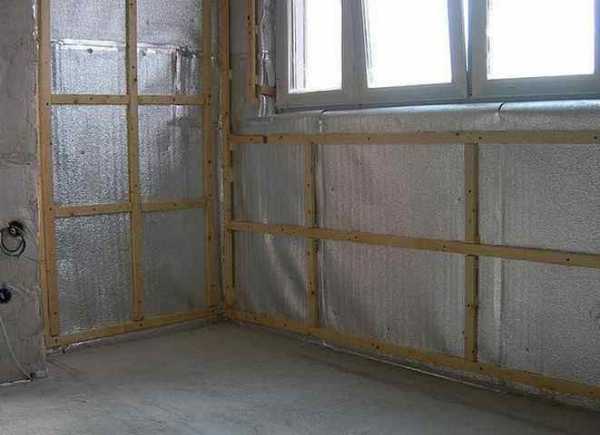

Penofol is a foamed polyethylene coated with an aluminum technological foil. Installation of the canvas is not difficult due to the lightness of the material. It is used not only in construction. It is perfect for thermal and sound insulation of machine parts.
But how to glue penofol to concrete? After all, it is a very unstable material with high thermal conductivity, heat capacity and even the ability to accumulate moisture.
https://www.youtube.com/watch?v=RgKvM3-JFRU
To fix the insulation on solid brick or concrete surfaces, the glue must have a number of properties:
- Have a high degree of adhesion and hygroscopicity;
- Do not destroy the material;
- Be resistant to weather conditions;
- Withstand large temperature drops;
- Have fungistatic and antiseptic properties;
- Do not lose their properties over time.
For the best fixation of any material, special solvents are added to the glue. They create a certain porosity of the bonded surfaces. Moreover, there are no universal solvents; each material needs its own.
But, for example, penofol is able to reliably adhere to penoplex without solvents.
If a bath or sauna is insulated, then when choosing an adhesive, one should pay attention to its heat resistance and resistance to water vapor.
Fig. 2 Fixing penofol on metal structures
An important property is environmental safety, especially when using material for interior decoration. Only certificates of conformity can refute the toxicity of the glue. Import manufacturers often use toxicity certificates under the abbreviation EMICODE.


The technique of using the glue method of penofol is simple and cost effective. The insulation is very light, which means that it does not require the application of a large amount of adhesive. When fixing to metal, it is worth making sure that there is no water base in the composition, otherwise this will cause significant surface corrosion and damage to the insulation itself.
The surface for gluing foam foam should be flat, free of dust. Concrete walls or floors should be plastered without cracks, and metal surfaces should be treated with an anti-corrosion coating.
The glue is applied on the non-foil-protected surface of the penofol in an even layer. All sections of the insulation should be oiled. Particular attention is paid to the edges of the panel.
Before fixing penofol, hold for a time from several seconds to 1 minute, so that the glue dries a little. This will ensure the best adhesion. After the canvas is pressed to the surface, holding it, gently smooth it until it is completely fixed. Seams between pieces of insulation can be greased in advance or after finishing the entire surface.
Adhesive types
Let's list the most commonly used glue options.
- For rooms with high humidity, MV-40 is suitable, which has moisture resistant properties. You can also choose T-Vanguard-K.
- For residential premises, "Express" or "Universal" is usually used.
- When it comes to the installation of external building structures, then it is most advisable to choose liquid nails or assembly glue. For example, Moment Montage will do.


- Titanium is good for precast concrete base.
- Neoprene-2136 in the form of a spray or contact type Acrol is selected for adhesion to foam.
- Olfix and Ceresit are universal glue options. They are perfect for working with any kind of surface, including concrete.
Life time
Since foil insulation has appeared relatively recently, it is not yet possible to establish an exact expiration date. However, conducting experiments, we can say that the material does not lose its properties for 200 years.
The service life of the installed insulation depends on the glue used. If the adhesive has passed the expiration date, then you can re-install it with the same heat insulator.
There are many heaters in the construction market. The choice is so wide that the question arises, which is better. To answer, you need to compare the characteristics of the thermal insulation material and the scope of application - street, living room, garage or agricultural building.
Bonding polyethylene with acrylate glue
For bonding films or polyethylene products, acrylate adhesives are used, intended for bonding materials with poor adhesion.It has a filler made of glass microspheres, which prevents the adhesive from sliding off the place of gluing, so the connection is strong enough after the glue is finally hardened.
Before starting gluing, the surfaces to be joined must be thoroughly degreased and dried. The adhesive is supplied directly from the packaging. The optimum temperature for the polyethylene compound is +21. +23 ° C. The glue released from the package must be used within 2-3 minutes, then it will lose its properties. After applying the composition, the surfaces to be glued are immediately docked and pressed. The maximum mechanical strength of the seam will be reached within 4-5 hours. The exposure of the new compound is carried out at temperature values in the range of 15 -70 degrees above zero.
